Anthony Snyder's History Page
How I invented a predecessor to Windows and switched networks.Plus a few personal opinions about capitalism near the end.
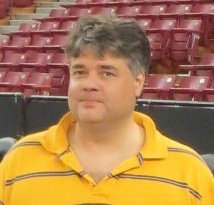
snydermind
- Introduction
- My First Puzzle
- Creative Hobbies at a Young Age
- Intense Desire to Program
- World's First Hand-Held Inventory System
- My Dad's Subterranean Fortress
- Taught Myself to Program in Hexadecimal
- Boardless Raster Graphics
- Programmed a Few Games
- Long Trip
- A Predecessor to Windows
- Customs Broker Software
- First Cube Solving Method
- Other Subjects
- Second Cube Solving Method
- Perfect Scores in Spatial Aptitude
- Fast Programmer
- My Opinion of Education
- First Game for Wide Distribution
- Loved Setting Records Wherever I Went
- First Computer Language
- Teaching Puzzle Solving Methods to Dad
- World's First Switched Networking OS
- Attempting Computer Business
- Angry Anonymous Caller
- Second Computer Language
- Extreme Burn-Out and Problems
- Recovery Process
- Traded Designs to Switched Networking OS for a Drink
- First in State at Monster Madness Competition
- More Recovery
- Improved Writing Abilities
- Theory on How Existence Formed
- Theory on How the Human Mind Works
- Solved Rubik's Cube in 6.5 Seconds
- Solved Rubik's Cube in 16 Turns
- New Position on Intellectual Property
- Methods That Last
- New Directions
- Today
Introduction
Hello, my name is Anthony Snyder. You've made it to my history page. Here I list a few noteworthy things from my past. It is by no means complete, just a short summary of things I found interesting and worthy of public display.
I generally look pretty goofy in most pictures, something to do with the flash and the anticipation. This is one of very few that turned out half-way decent.

I was born in 1964.
My First Puzzles
I solved my first two puzzles in 1965 (age 1). A 3D rabbit puzzle, and a 50 piece puzzle of a map of the United States.
Creative Hobbies at a Young Age
In 1972-74 (ages 8-10) I designed several message coding systems, relatively low tech but fun.
I also designed an electric car with eight wheels on individual telescoping legs, looking much like a spider, all computer controlled and capable of driving around obstacles, up steep hills, and even walking and climbing (while wheels are locked). I am still interested in making one of these cars someday.
That was also the time that I practiced adding and multiplying large numbers in my head. I found it easier to get to sleep this way. At one point I could handle 4-digit x 4-digit multiplication fairly easily. Then someone handed me a calculator and I decided to rethink this hobby. I dropped it entirely, didn't make any sense.
Intense Desire to Program
While riding on a ferry boat in 1976 (age 12), I came face-to-face with my first video game: asteroids (some preliminary version, can't remember the name or maker). I stood across the hall and stared at the screen from a distance while other people played it. I did this for what seemed like 40 minutes while I sorted through my theories on how the computer powering it functioned. I settled on the theory that there was a central control unit that used numbers to represent characters, and numbers to represent locations on the screen, and that it processed numbers representing instructions on what to do. This theory fit the best all the way around, and from here I was able to figure out a rough theory on how the game was created using these numbers.
Then when I got back to school the next day I checked out and read every book on computers in the middle school and high school libraries, and to my dismay none of them taught programming. So I then purchased a TI 58 programmable calculator and read the manual on how to program it - and there in front of me was a complete description of exactly the theory I had on how it would work, just like I imagined it. Then I later upgraded to a TI 59C programmable calculator, invented a 3D maze generator, and used it to produce a 70 foot maze, which to this day no one has solved. However, one student made it about half way through. It was taped to the underside of a beam in the highschool library for over 10 years. Every maze had exactly one very tough solution, all different.
Invented World's First Hand-Held Inventory System
By 1978 (age 14) I created the world's first hand held inventory system using the same TI-59C programmable calculator. It had room for 1200 prices, several inventory applications, and the whole thing ran from just 900 memory cells (I think these were 1.5 bytes each). Before this, TI, IBM, and HP all said it was impossible. It helped my customer reach 99th place in the Fortune 500 list within about 3-4 years.
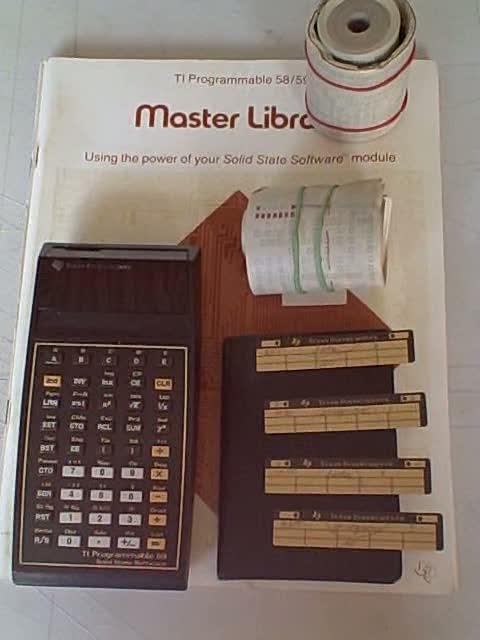
A couple rolls of 3D mazes are at the top of the photo, the inventory program is on the mag strips to the right, and calculator on the left.

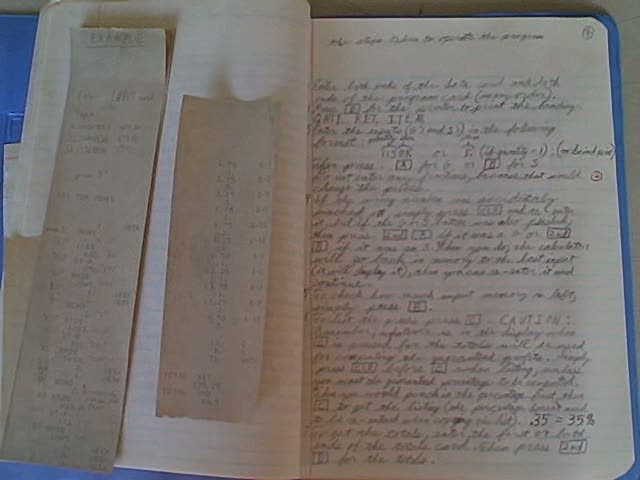
This is the very old (and ugly) manual I wrote for the inventory system.
My Dad's Subterranean Fortress
Here's the house I lived in during my teen years, this is the same house featured on the History Channel a few years ago (Secret Passages Episode 2), displaying the Subterranean Fortress (my dad's hobby beneath the house). This specific episode is not for sale at historychannel.com (if you write them you'll receive a list of 6 possible reasons as to why). I have a copy, just ask.

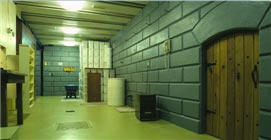
Here's a pic of my dad just after he finished taking the forms off of one of the cement pours. He was 5'9", note how high the ceiling was compared to his height. This picture was taken in the base room, over 40' long, and there's three stories below this one, plus a cave below that. To this day no one has seen what was in the cave, we had to seal it up immediately due to the extreme ground pressure at that depth.

People often asked my dad why he went through so much work to build such a major underground bunker. He would never give details, only a single vague answer: "them". (And he would attempt an eerie voice while saying it.)
Taught Myself to Program in Hexadecimal
Then in 1979 (age 15) the highschool purchased a motherboard to an Ohio Scientific Challenger 2P microcomputer (the school's very first computer). My computer science teacher told me that it was my project to build a computer from this board. With no instruction I managed to figure it out, making the case out of plywood and plugging together the various parts. I turned it on and got a machine language prompt. All it would accept were hexadecimal numbers.
I wanted so badly to program this computer that I sat there for several hours each day, using trial-and-error to test various hexadecimal number combinations at different memory locations until I figured out some of the instruction set to the CPU. I kept expanding my knowledge of the CPU and memory locations through this trial-and-error method. Finally, after several days of this I managed to place a space ship at the edge of the screen and get it to fly across the screen. I wrote the program in my mind using hexadecimal, and calculated all the addresses by hand.
Then someone handed me a manual, and the school purchased a couple more computers, including a C4P (color, wow!).
Boardless Raster Graphics
As cool as it was to get these computers, they did not have graphics boards (very pricey boards that only Apple had), instead they would only display characters. So I took it upon myself to write a driver that would emulate raster graphics without the need for a graphics board. I did this by writing a machine language routine that would emulate dots on the screen through tricky character manipulations. Once I finished this routine the C4P was then capable of line drawing and plotting at extremely high speeds, producing quality high performance raster graphics on a computer that did not have a graphics board.
Forget graphics boards! I didn't need them...
Anxious to show off my C4P's magical graphics capability, I quickly made a game (my own version of asteroids) in time for the science exhibit in Seattle. I had the game on display all day while people walked by, and on occasion a knowledgeable person would walk by that noticed this graphical game running on a very non-graphical C4P and would ask me how I got a graphics board for it, and of course I would happily reply that I emulated one using software. This is one of the first times where I encountered the "disbelief syndrome" that I have noticed in people over and over in the past, each time I'd tell them something's true that they were inclined to not believe true, and instead of asking to buy my software I would get dubious looks and they'd move on, like it was some sort of trick. At any rate, I waited and waited for the camera man to come by but eventually had to run to the bathroom, and went home that night not getting the chance to show off my graphics on TV.
Then a couple days later, and to my astonishment, the janitor at highschool told me that he saw my game on TV. I asked him if it was exactly the same, and he said it was the same computer and the same game. They must have filmed it while I was in the bathroom, bummer, it was televised without an explanation for the graphics. No one got what really happened.
Programmed a Few Games
Over the next few months I created half a dozen computer games for the school's computers. I didn't understand the concept of marketing and instead sold copies of the games through the local computer store (one store), and made about 5 sales per week that way, which I considered adequate for the work I did.
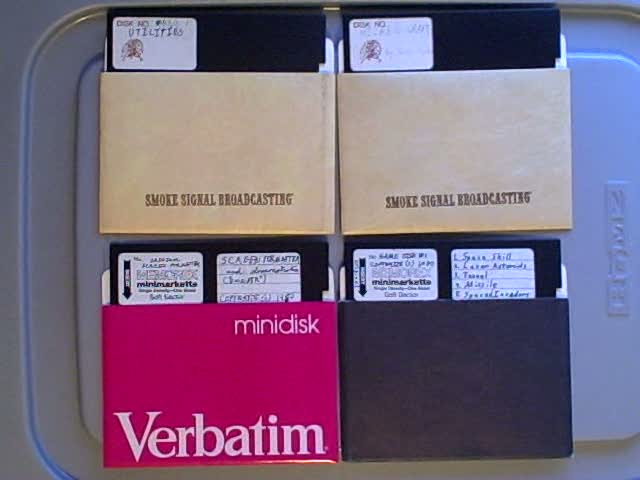
These very old floppies from 1980 (age 16) contain the games and drivers I made (however, back then drivers were called utilities or routines, not drivers).
Long Trip
Then my family and I took a trip around the U.S. in a motorhome. The whole time I was thinking about ideas for making my own computer operating system. It was a thought that stuck with me nearly every second of every day. I was convinced I could create a complete OS without help, based on much better concepts than the OS that came with the computer.
A Predecessor to Windows
Once we got back I was more eager than ever to work on my own OS. However, I had recently pinned the state champion wrestler (for my weight of 132lb) in less than 60 seconds on the bare cement next to the gym (half the class surrounded us and insisted we wrestle to see who was better, apparently it was a big issue everyone wanted the answer to), and so afterwards people were begging me to join wrestling. It was a tough decision, but I ended up making the OS instead. It was interesting because I had actually decided to join wrestling, and as I walked to the gym my mind was thinking through the modules for the operating system, then just as I opened the door to the gym to go sign up I realized I knew how to create the entire OS. So I then paused with the door half-way open, thought another moment, then closed the door and walked over to the computer room and started programming. (My little school was top in the state in wrestling every year for about 18 years, and often competing against larger schools, I think there was something in the water.)
So in October of 1980 (age 16) I created a self-booting stand-alone process manager including a variety of OS level functions. It was not a complete operating system, though the basics were demonstratable and it did not depend on anyone else's code or concepts to work. Once the computer was booted from my floppy only my OS functions were active. Some of the functions evolved forward from an OS overlay that I created previously called, the "Deluxe Screen Formatter", which contained a variety of functions to speed up the OS and give it graphics capability (without a graphics board - see above). Then I recreated most of these capabilities in my own OS, including a self-booting system, and my own task manager. It was capable of running multiple programs at the same time in separate boxes on the screen, and included resizing and word-wrap plus other text editing capabilities (all the things I figured would make screen space more useful). I started calling it "The Boxes Operating System", though I still had a list of things to add to it before it would be complete. It ran on the Ohio Scientific Challenger 4P micro computer. This computer had 48k of RAM and 2 single sided low density floppies - no hard drive (back then hard drives cost over $10,000). My OS ran 10x faster than the stock operating system, and it allowed the user to use key combinations to place boxes on the screen and to run separate programs inside each box, resize and move the boxes, etc. I demonstrated this at a [to be] well known computer club shortly after the club first formed. I also demonstrated multiple simultaneous instances of my word editor running inside these boxes. Each of the original members were present. They all watched as one of the members copied the OS (right after he asked my permission and I told him "no").
Years later I discovered that this member was very likely personal friends with Steve Jobs.
A number of people believe that Apple used ideas from BOXES OS to help bring to market the first Macintosh. For a sophisticated market-ready OS to fit within the very small amounts of space affordable in that era required tremendously efficient code.
The movie Pirates of Silicone Valley does a great job showing how Apple and Microsoft got started.
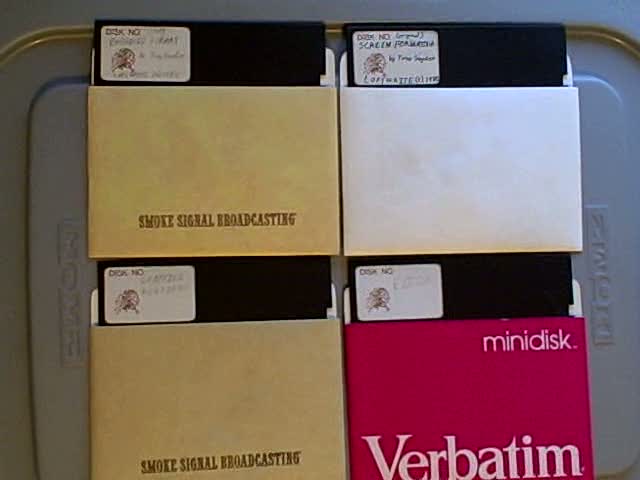
These very old floppies from 1980 contain the operating system that I invented.
My computer science teacher at school handed me a card with a phone# on it, telling me it was the number to the president of Ohio Scientific, and that I needed to call him about my creation. I kept asking him to make the call for me (I was chicken). He insisted that I had to (he understood the need to get me past my issues). Several times I picked up the phone and started dialing, then hung up before finishing. I just couldn't do it. Then finally one day I lucked into a local job and forgot all about it. (If I had instead made that call, then I would have probably stuck with OS development the rest of my life, developing the first marketable Windowing OS for Ohio Scientific, based on original non-pirated code that could have been legally protected, and my uber efficient operating system would have been in the running from the very start, possibly changing the course of history.)
Customs Broker Software
In 1980-1981 (ages 16-17) I developed from scratch a complete Customs House Broker software system including about a dozen modules to help process customs forms, billing, receivables, G/L, and more, all without help or training of any sort, and using a computer language I had never used before. I lucked into this opportunity after a local business's IBM trained programmer had given up, saying it was impossible on their machine. I have always liked the word "impossible", as it seemed to make the challenge more worth pursuing.
The brokerage firm used my software for 6.5 years, claiming it was more efficient than anything else on the market even beyond that time-frame, even on far more expensive computers.
First Cube Solving Method
In June of 1981 (age 17) I invented my first cube solving method, Snyder Method 1.
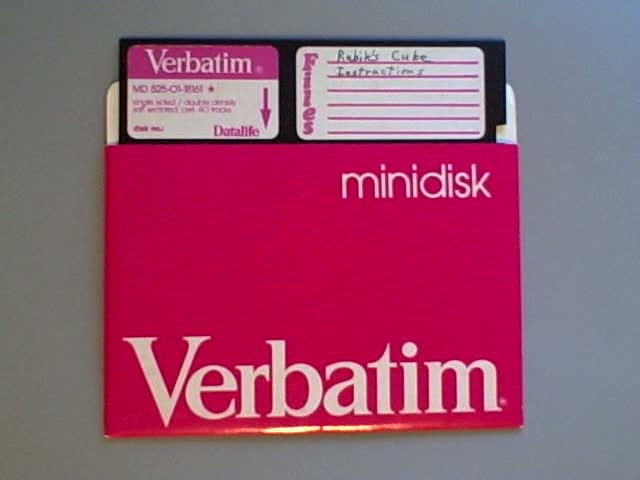
This floppy from 1981 contains my first cube solving method - its just a program that prints a book. Though I thought about a modeling program I did not write one.
A copy of this floppy was stolen by a classmate, who then sold copies all over Canada for $2 each.
Another copycat of my first method renamed it "Ruwix", which currently shows up at rank #1 in Google (search on "simple cube solution"). The algorithms are identical. One stage is represented slightly differently. Its a copy. At least they don't claim to have invented it, but it would be better if they credited the inventor.
In 1982 (age 18) I used this method to win the First Annual Semiahmoo International Cube-a-Thon, held in White Rock B.C., Canada.
Other Subjects
Then later that year I received the John Philip Sousa award for playing the French Horn, then the English award, the Biology award, the computer science award, the math award, the Valedictorian award, and some other awards I can't remember at the moment. Just before all this I had a talk with my art teacher who was trying to talk me into a career in art. I told him computers were my thing. Funny thing is my classmates voted me "Joe College", not realizing that I had no desire to go there. I received those awards because I loved to learn, not because I wanted a teacher.
I often found it confusing to listen to a teacher teach, and would sometimes miss one or two questions on the test as a result. I think it had to do with my extreme sensitivity to voice tones, psychology and the technical ambiguities in "casual dialogue", that would then get me to over think a problem. Eventually I got about half the high school's teachers to agree to let me work in the computer room instead of going to class, so long as I aced each test. Once I didn't have to listen to them anymore, it was way easier to learn (of course we would laugh about that, so it wasn't a put down). The text books were consistent and not at all confusing so long as I didn't hear anyone's voice in my head while reading them. For some reason voices and speaking both greatly affected my thinking. (I never got over this problem, even today it interferes.)
In math I could shrink an entire week of studies down to fit the 5 minute break before each Friday test. I would speed read the chapter summary, pausing at anything not quite clear to check back in the chapter for more explanation, then once I got it I would continue through the rest of the chapter summary until I was done - 5 minutes or less each time. This would drive some classmates mad. I can remember a time during a class prior to a class with a big test when the top classmates would crowd around me asking me how to do some problem, and I'd say quite honestly "I have no idea". They would then remind me that the test was next period. And I'd say, "no problem, I'll study during break." Then we would all take the test and I'd be the only one to get 100%.
Second Cube Solving Method
Then in November of 1982 I invented my second cube solving method, Snyder Method 2, and used it to win the Ideal Toy Corp Chicago Cube-a-Thon. I was probably the first person in the world to solve a cube in 11.5 seconds in front of 800+ people. At that contest I solved it in less than half the official world record, causing the announcer and hundreds of people to go stone quiet for nearly a minute. Though this did not count as an official time it was at least my first very good public time. Ideal Toy Corp did not have a well conceived contest and was not setup for official times. However, it was the main Rubik's Cube contest in the U.S. that year.

Perfect Scores in Spatial Aptitude
And also in that same year I speed-read a 22 page IBM designed programmer aptitude test, completing the test in 20 minutes (less than one minute per page of problems). I scored perfectly on the first 20 pages. These pages dealt entirely with spatial aptitude, while the rest had to do with team-work issues rather than aptitude.
Fast Programmer
At this stage in my life I could type program code from my mind at well over 100 computer commands per minute, with no outlines, just from visualizing the program in my head. Some of my friends swear it was closer to 200, but even I have a hard time believing that. I remember filling a screen with computer code in a few seconds, free of typos (I corrected the typos before they appeared on the screen), and repeating over and over for hours. I couldn't go any faster without losing characters to the primitive debouncing algorithm. Then one day when I was at my fastest and focused on my program, I was not at all aware of the fact that the sound resembled someone throwing a fit. During one of these sessions someone ran into the room asking over and over what was wrong. I remember pausing only for a moment to point at the screen, then continued the typing to not lose my train of thought. Apparently that wasn't good enough because the alarmed questioning continued, so I then slowed way down so they could see that I was typing a program, not freaking out. It seemed strange to me that it took so much convincing. Apparently it was much easier to believe I was freaking out.
My Opinion of Education
Here is a picture of me at college...

After sitting in on a computer course, it was clear to me that the education system based its materials on entirely the wrong ideas (and I was convinced the same might be true in other subjects), so once the year was up I quit college to start my own self-taught education process.
I find it interesting how nearly everyone I meet today considers education and learning synonymous. "Oh, which degrees did you get first to be able to do that?" "Which courses did you take to learn all that?" "What training do you have?" "Which school did you get your degrees in?" I tell them all, "I taught myself". Nearly everyone looks puzzled at this point, they don't seem to get it.
First Game for Wide Distribution
In 1983 (age 19) I developed my first game for a widely distributed computer: The Timex Sinclair 1000. This tiny computer had 1024 bytes of RAM (less than my programmable calculator, which had 900 memory cells consisting of I think 1.5 bytes each), yet I made a very fun and addicting game called "Tunneling" (hmm, where did I get the idea from?). With over 100 levels of play, seemingly intelligent monsters would hunt for you deep underground while you would attempt to dig through to the treasure and escape without getting hurt by the monsters. Each level was harder and more interesting.
Unfortunately, Timex dropped the T/S 1000 the same month that I placed my first advertisement to sell the game. I still have a box of games, only a handful sold, mostly in that month.
Loved Setting Records Wherever I Went
Then when I needed money for a plane ticket home from Minneapolis I walked into Show Biz Pizza and made a deal with the manager to set the world record on the most popular game of the time, Q*Bert, in exchange for the money I needed to get home. I then proceeded to play for 58 hours straight on one quarter while they publicized the event. This picture was taken after I hit 10 million points. My final score was over 25 million points, which for some time was the world record for unassisted play.
They made something like $17,000 in additional sales from their promotion, while I earned the $300 I needed to get home.
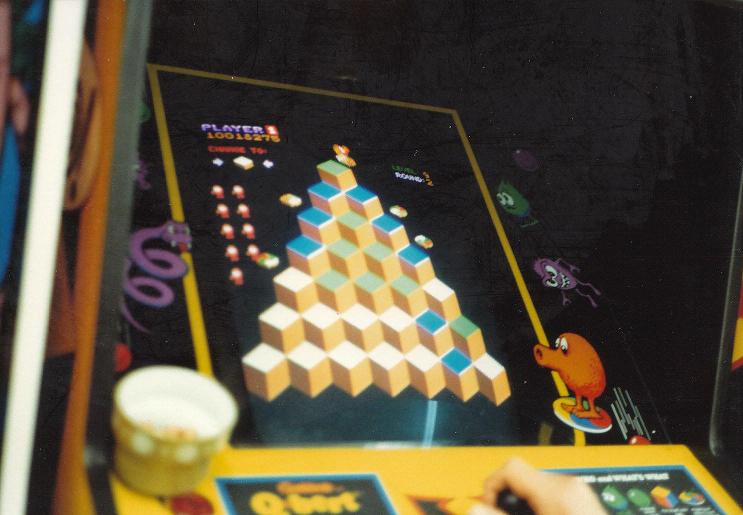
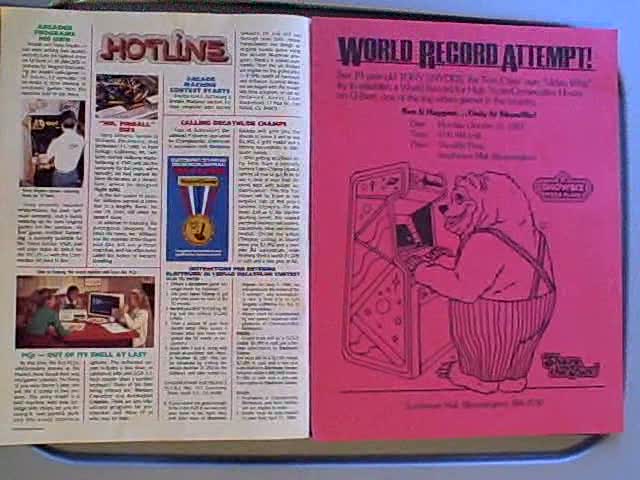
The article is on the left edge of the 2nd picture, and the flyer from Show Biz Pizza is on the right.
First Computer Language
In Spring of 1983 (age 19) I woke up with the designs to a computer language in my head, that could process data without having to sort and merge at night (at that time all business software required endless sorting and merging at night, so this was a big improvement). I decided to call the language DIDBase, and quickly developed a simple prototype using RadioShack's Tandy 1000, then used it in-house to create custom programs for several local businesses.
Teaching Puzzle Solving Methods to Dad
After winning 2 competitions my dad started taking an interest in puzzles too, here I'm showing him how to solve a Rubik's Clock. (It took me 20 minutes first try, but only because everyone was bugging me. Normally I needed no longer than 10 minutes for any new puzzle. The 5x5x5 took me 10 minutes first try.)

He couldn't solve the clock, but I did manage to teach him how to solve the cube, and from that point forward he would show off to his students at the university.
World's First Switched Networking OS
In 1985 I partnered with Daniel Seafeldt, and together we rewrote the DIDBase language and added considerably more capability, including what was likely the world's first switched networking OS for a LAN. We did this using software only, because all we had were generic 8 bit cards. Using these 8 bit cards it was faster than any other LAN on the market for the next 10 years regardless of hardware and software.
It was truly collisionless, producing very little waste and tremendous efficiency. The result: blazing LAN speed on 8 bit cards. However, it only worked with DIDBase.
Attempting Computer Business
Over the next few years I made some money in software, using my own language to write complete packages from scratch, nearly every package was different, and at very low prices. I was into everything that came along: mail order, inventory, customs brokerage, contractor bidding, mail box, vital statistics (the county used my software for birth and death certificates), manufacturing, freight forwarding, geneology, retail store, payroll, etc. Anytime someone wanted a program I agreed to do it for them.
And in every case I developed the software without training of any sort, using my own language.
Angry Anonymous Caller
In my early 20's I remember getting a phone call from someone that would not identify himself. He seemed angry. He kept asking me questions about my computer language, particularly how many people I had working on the project. I said "just myself and one partner". He told me he was trying to do the same thing with 200 programmers. Then he hung up. Back then, who had 200 programmers working on a language?
Starting about then and over time I can account for a number of strange and bizarre events that I can best summarize as 3rd party meddling.
Second Computer Language
In 1989 (age 25) I created a new computer language, Transpro, a language with considerably more capability and capacity than before, and special features that made application development a breeze. I even had a few unique features, such as the ability to modify a program while it was in use. I used it to rewrite the older applications plus added some new ones: a turn-key stock tracking and investment management system, automated broker interface, warehouse management, free trade zone, shipping & receiving, scanner based inventory system, and an electro-automotive parts cataloguing system.
I made some more money, then lost it due to a series of con artist attacks, a psycho ex-girlfriend, poor business management skills, and considerably more bizarre and threatening 3rd party meddling.
Before long it was clear that I had a problem helping anyone that came along with their tricky projects. If they had a project that noone else could do, I would jump on board all excited that I was going to do something "impossible". And if someone had no where else to turn, I would try to help regardless of my other commitments. I always considered pay secondary to the challenge, and secondary to what they needed done. This tendency kept pulling me away from the smarter business strategies. For example: instead of putting one package on the market and pushing it, I was developing many different packages all at the same time, writing them all from scratch, while simultaneously developing the language that powered them. As a result I never had enough time to work out the necessary details to market just one application, let alone deal with all the problems building up all around me from my lack of control on financial and personal issues, plus far more (and crazier) 3rd party meddling.
Extreme Burn-Out and Problems
My solution to any problem was to take on more contracts and to work more hours. I pushed the envelope as far as it could go, sometimes working 130 hours per week. I figured out a trick for self-induced adrenaline that kept me going at full tilt with very little need for sleep (at this time in my life I would sleep 20 minutes a few times per day). I felt I could take on any amount of work while keeping this adrenaline rush going around the clock, and always focused on keeping that at a maximum as a means of solving the problems through hard work, rather than taking direct control over the issues themselves.
At about this time my dad died (1999), here is one of my last photos with him in it, we were talking about my ideas and he seemed to have a more open mind than in the past.

Due to a variety of reasons including extreme burn-out and considerably more and worse ongoing 3rd party meddling, I decided to switch to the opposite extreme, from working 90-130hr weeks for a number of years, to just 1 or 2 hour weeks while living like a hermit in the woods. I was in no condition to do anything at that point and lived on practically nothing. Some of the things that had happened were quite a shocker, resulting in a number of psychological symptoms. It was time to take a break.
Recovery Process
This was the most valuable learning period of my life, where I started to figure out what I was doing wrong, and spent time focusing on myself rather than running at full tilt doing others' bidding as their slaves. My entire focus prior to this point was on design concepts, and getting work done - as normal life seemed more like a dream, than reality. I started to invert this paradigm by putting myself first, and shifting my focus to reality, tactics, character, and strategy.
I figured out that what I was missing were skills typical of empire building: particularly strategy, management, and security, plus a change to my personality that would make it easier to take command of situations outside the computer.
I started with a classic empire building game: Master of Orion II.
I played the game over and over, each time disappointed that I would compulsively do things that didn't fit the strategy I was working on. Finally, after what seemed like a year of this I conquered the compulsion and stuck strictly to the plan. At that point I was free to improve rapidly. In a few short days I improved to the point where I could beat the computer on the "impossible" setting. I went on-line and to this day remain undefeated. I never used cheats, though there were those that were certain I did.
At this point I had a good handle on the resource management skills that I was previously lacking, and started taking a new look at how I handled things.
Then I hunted down an on-line game with deep mathematical strategy and cruel players, so that I could toughen up my personality, as it was also clear that I needed to switch to an A-Type to accomplish my goals. I found a game called 1000ad which suited these objectives perfectly. As I climbed the ranks I discovered more and more players that had A-Type ethics and behavior patterns. To win the game I had to both master the mathematical aspects of the game, and change my personality. It took what seemed like years to get past this challenge, but I finally made it to 3rd place in the world, while simultaneously discovering that Pentagon strategists were also using this game for their practice.
Traded Designs to Switched Networking OS for a Drink
Burned out and frustrated I sat at a lounge doing my cube over and over while figuring out my plans for the future. Then this middle aged man sat down next to me and asked a few questions about the cube. A couple men nearby were watching. We got talking about random subjects until we hit on networking. Then he asked, "if you're this good with puzzles then maybe you could help me with a problem I'm working on." He continued, "let us suppose I were to create a LAN with no collisions, how would I go about it?" I said, "well, it would work like this..." and I proceeded to explain how to do it using software. He listened intently and asked a few more questions, the conversation lasted what seemed like 20 minutes. Then he stood up and told me he was the senior network engineer at Microsoft, he stated his IQ (150 something), and that he appreciated my advice. Then he asked the bartender to get me another one of my drinks. Then he and the other two men walked out.
Sometime over the next two years Windows compatible switched LAN boxes flooded the market, taking over where hubs left off. Clunker LANs were a thing of the past.
First in State at Monster Madness Competition
Then I heard about a video game contest with a $5,000 prize. I figured I could use the money and decided to participate - this was the only video game contest I ever entered. It was a state wide contest for a game called Monster Madness (a game involving intense mathematical strategy, timing and skill). You can find this game at numerous restaurants and bars throughout the country. Though I was overweight and relatively sluggish, I knew from the start that I would win, and stuck to it until I did. After I won, the competition coordinator put the game's programmer on the phone. One thing he said was that I was the only person to ever make it to the black bonus level.
I was instantly known throughout the state as apparently there were quite a few people trying to beat my score. And yet that was my 3rd best score, the photographer goofed up on the best two so they didn't count. (My best score was over 625,000 points, while I won the state championship with a score of about 587,000 points.)
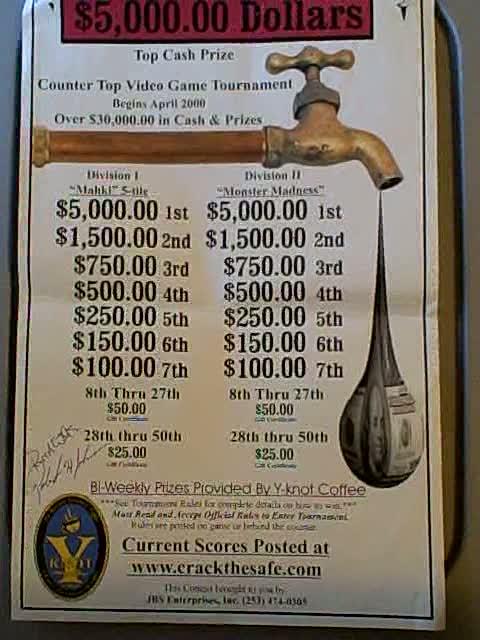

More Recovery
These successes were a big help to my recovery process. I had a lot of challenges ahead of me, and this put me in the right frame of mind to get started.
However, though I felt better I couldn't handle hearing the phone ring, and had to keep the ringer off. This was a clue that I still had a long ways to go (each time I heard a phone ring I would freeze up for several seconds before I could get a grip). There were still a number of psychological issues to deal with.
I also discovered that whenever I'd attempt to explain something, either verbally or written, that it would usually result in miscommunication. I knew what I was saying, but very few seemed to understand me. It took me some time to figure out that I had deprogrammed connotations and stereotypes from my mind, plus some of my vocabulary was wrong, both most likely a result of the extreme burn-out.
Improved Writing Ability
Despite these issues new thoughts started flooding into my mind. I reasoned them out and came up with theories.
Gradually, I reassembled a lot of my thoughts about things, forming new theories and conclusions about many things. I adopted a new less naive world view, and a new less naive personality. One that was comfortable putting strategy first, as a necessary step in protecting my future. And I found it easier to take charge on issues that I couldn't confront before.
However, the full process took a number of years to develop...
I setup my own website and used it as a sounding board to improve my writing skills. www.invisiblepuzzle.com gained in popularity, getting about 1000 hits per day around the turn of the century (a lot for a hobby site back then). I made it a hobby to write down each puzzle I found that was generally invisible to the public. I would solve the puzzle and put my solution at the website. These were ultimately called "conspiracy theories", and were born from my extremely burned out yet more aware (albeit a bit paranoid) mind.
After a few years it was more than clear that the website was drawing shady characters around me and putting me in danger, so I pulled the site (fall of 2003). As to which theories specifically triggered this activity, I have no idea.
Since then a few of my articles were republished by others using fictitious author names. There now seems to be a random scattering of my older articles across the web. It will remain that way as I am no longer in that game.
Though some of those articles were well written, my writing skills were not yet good enough to convey my favorite topics: my theory on how existence formed, and how the mind works. I struggled with these, not able to find the right words for several more years.
Theory on How Existence Formed
One of the biggest issues I had struggled with for many years, was existence. How could it be? I could not rest until I had a working theory to explain it. Just like any puzzle, I couldn't put it down until I had the answer. The funny thing is, after 15 years of asking myself that question, it wasn't until I told myself that I was capable of finding an answer, that I actually did. Before that I kept thinking it would be too complicated, and as a result mental blocks would get in the way. But then one day I told myself that I was smart enough to figure it out. And on that very day I figured it out.
Virtualcausality is my current essay on how this theory works. In a nutshell, it explains how each universe operates along an artificial time and space medium produced by host algorithms within the inevitable structure of logic, and how algorithms can execute on their own without a computer. As impossible as that may sound I use logic to explain every step. Please check it out, I'm waiting for some quality feed-back.
Theory on How the Human Mind Works
Throughout my recovery process I spent a lot of time analyzing my own thoughts, treating my mind just like I would a puzzle. And as a result of this process I figured out what appears to be a workable model for explaining human thought. It explains our linear and non-linear reasoning processes, emotions, triggers, delusions, addictions, intuitions, and so on, all using a single very simple model. In my opinion this is revolutionary. However, as simple as it appeared to me, I found it impossible to get it across to anyone for a number of years. I literally spent years rewiting this theory until I found words that worked. Areyoulogical now describes the theory well enough that it is just starting to come across to some people. I now have a small audience of people that understand it, or at least they say they do.
I think the problem for most people is that it sounds complicated, and this causes them to put up blinders. When in reality the concepts are extremely simple. Please give it a try and tell me what you think.
I'm convinced it has the potential to change a lot in the field of psychology, as it describes human emotion and behavior at a more basic level than anything else I've seen. It certainly helped me a lot. A few people have mentioned that it is similar to NLP, however, though I have not fully investigated NLP, what I have read of it appears to be at the next level higher. (I'm convinced that my theory is more fundamental.)
Solved Rubik's Cube in 6.5 Seconds
In the Fall of 2004 I did some experimenting with self-induced mind states. I knew from experience that the mind was capable of many times the normal level of focus in life threatening situations. And that time would seem to slow down (when really it was the mind speeding up), giving you plenty of mind-time to think something through (in what was actually a split second) that would potentially save your life. I wanted to tap into this and did some experimentation (non-drug). I used some mental tricks to psych myself out, then picked up a mixed cube (several people took turns mixing it), and found that special moment where it felt as though the universe was in perfect harmony all around me, and proceeded to solve it in about 6.5 seconds (it was timed with someone's hand watch). Everything went flawlessly and effortlessly, just like it does when you tap this power in a life threatening experience. My fingering was perfect, I used a combination of algorithmic and creative solving techniques, and the cube just flew together without pauses (I could see all the steps in advance). I talk about this some more on my cube pages.
Generally accepted rules in posting unofficial cube solving claims require that I add 0.5 seconds to any time obtained via a non-digital timer. This is why I post this solve as 7.0 seconds elsewhere.
Solved Rubik's Cube in 16 Turns
I can't remember the exact date, however, it was sometime between late 2009 and mid 2010. What I do remember is that I was at Peet's Coffee practicing my cube when I managed to slip into that special mind state again, this time turning the cube slowly on purpose to see how efficiently I could solve it. I counted 16 turns total. This is my personal record for a fully mixed cube. (More recently I did it in 15 turns with a cube that may or may not have been fully mixed.)
I think these direct-solves will become more frequent now that I'm focusing more on my method than speed.
New Position on Intellectual Property
This is one of the most frustrating subjects imaginable. On the surface the patent system appears to be a system designed to help the small time inventor to stake territory from amongst corporate giants. And maybe at one time it has worked this way, and maybe it still does for some people. However, in thinking through many of the angles I've come to the conclusion that it cannot be trusted.
If you don't file a patent, then someone else can file one and bar you from any kind of business activity based on your own original work, even when you prove you invented it first.
And if you do file a patent, your method or process is then disclosed to the public, which means they will learn from it and likely find another way to do the same thing. The only way around this is to patent every possible way of going about it (filing lots and lots of patents, each costing as much as $40,000). I see corporate giants doing this, but what about the small time inventor?
And then once you succeed in patenting every way of going about it, and setting up your company to profit from it, it just so happens that just about every innovation of significance is also covered by a blanket categorical description for things deemed top secret, that allow the government to pull your patents. Example: "software". Another example: "solar collectors with greater than 20% efficiency". Another example: "energy converters". They don't pull all the patents fitting these blanket descriptions, instead they use the secrecy laws as a free ticket to take whatever they want. You go through the expense. And if they like the patent and don't want to deal with you, they take it. Last year alone they took over 5,000 patents for things that may have otherwise significantly improved society. For more details on this huge problem that negates a lot of what we believe we have in a Democracy, do a google search on Steven Aftergood.
All my life I have had idea after idea stolen, design concepts stolen, methods stolen, and software stolen. This is a fact of life that I have wisened up to and have now worked out strategies to prevent on my own. It was a part of growing up. Problem is, now that I have my strategies worked out, I see that the patent system can still be used to steal from me anyway, and there's not much I can do about that. If I launch a product based on a unique method, someone else can patent it and bar me from using my own method, and even demand all the money I earned from selling my own product. If I get in bed with a giant corporation and let them file all the patents necessary to fully protect it, then they will end up controling it, not me. Then once they control it, they could easily shelf it, use it for something other than my intended purpose for it, sell it, scavange it for things they can use then throw it out, or boot me through some loophole in the contract, all depending on their objectives. And even if I manage to navigate through all that, gaining a worthwhile contract and keeping them on track with my vision, it can still be yanked away by the government through their secrecy laws (that seem to cover anything of significance, including all software).
Mega corporations have already blocked off branches of Intellectual Property with "choke-hold patents", where any innovation in the branch must pass through their patented zone in order to become viable. And these same mega corporations have watch dogs scooping up innovation left and right using creative contracts that deliver the innovations to them like a funnel. They indirectly manipulate finances and deals for the innovators, to loosen their grip, making Intellectual Property scavange hunts all-the-easier. These strategies are gaining in complexity and strength every year that goes by, resulting in an evolution of tactics that in the end tilts the hand of the patent system to serve the mega corp, not the innovator.
I say the patent system should at least stay out of software.
Methods That Last
People often tell me that I better hurry because whatever I do will go obsolete in a couple years. I like to respond, "oh, you're thinking of software developed by marketing companies, they don't design for the next decade, they only think about tomorrow". I currently have over 100 installations of custom software that I wrote from scratch over 20 years ago using entirely my own concepts and algorithms, still running, still performing mission critical functions, and still compatible with Windows. I even on occasion get a royalty check on a 20+ year old program that still sells - now tell me what software you know of that still sells after 20 years?
In my observation, the ideas born from high pressure market driven companies are the ones that go obsolete the fastest, where an uninformed and greatly misled market is suckered and manipulated by ever increasing marketing gimmickery and feature rich monstrocities built on top of pirated platforms. Whereas the work produced by true technology visionaries, keep running and running like the energizer rabbit, for decades. However, and unfortunately, the high pressure market manipulation companies get all the money, they leverage the industry to get bigger and better deals, and they set the standards (biasing mainstream away from the right way to do things), thereby drowning out true vision on all sides. And to make matters worse, the true technology visionaries either stick to themselves (like me), finding out the hard way that working solo while keeping their ideas safe will only backfire due to the design of the patent system, or they give in and let a major corporation hire them for peanuts relative to what they're worth, just to find out that major innovation was not what they wanted after all, as these companies nearly always prefer innovation that satisfies the short-sighted goals of the company.
They make all the money, drawing most of the technology visionaries away from isolation, just to put the thumb on them, forcing them to conform to the "what sells tomorrow" campaign, while using their vision as a carat to motivate them. A carat that never materializes because the whole idea was the motivation, not the vision.
One sure way to tell the product of a technology visionary from the product of a high pressure market manipulation company, is in how they handle hinge technologies. A hinge technology is a technology that other technologies depend on. For example, the IP layer of the Internet is a hinge technology because all the software running the web depends on Internet Protocol to function. A market manipulation company sees hinge technology as something to exploit. They will build their product first, working into it all sorts of features that sound great to a naive market, which will instead tie their customers to the product in a way that makes it very difficult for them to switch to another product later. They do this by adding features to the hinge technology that shouldn't be there, and by increasing it's sophistication beyond that of a sound design, to make it appear more comprehensive to the naive market. When instead it is a trap. You build your application on top of this trap and you're stuck, having to use their hinge technology from then on, and limping along with less-than-optimal efficiency (exploited hinge technologies are never optimal across the board: performance, security, memory requirements, cost, or reliability). And if they are very good at this they will pursuade mainstream to deem it an appropriate design, and the education system to teach courses based on their manipulated mainstream standard.
In contrast, a true technology visionary will see hinge technologies as sacred things that should not be exploited. They recognize that the future of mankind depends on pure hinge technology, which is only possible when it has not been exploited. Without pure hinge technology endless problems and stagnating technological growth become inevitable. 1000x the problems calls for 1000x the technicians, more training, more education, more cost, and less net function. A true technology visionary designs hinge technologies very carefully, producing the simplest comprehensive format for things that are best suited as a part of the hinge technology. A pure hinge technology functions independently of all other interests, and it is rock solid, requiring no maintenance whatsoever.
The current format for capitalism makes it almost completely impossible to produce pure hinge technologies.
New Directions
The emerging world is driven more and more by manipulated mainstream standards, and less and less by true vision. This is the tail wagging the dog, where the dark sides of capitalism generate tremendous waste that overruns our schedules, health and finances. And where law is a smoke screen for thousands of well honed railroading tactics that facilitate dirty deeds painted up as "truth and justice" to the 3rd party observer. And where the war on terror is used to spread this corrupt infrastructure to the rest of the world through treaties.
I see a general public blindness resulting from an imbalanced education system that focuses on conditioned training with recipe style how-to knowledge taking over for even the most basic understanding of rational thought. Between a one-sided education system and the extremely busy schedules that capitalism keeps everyone caught up in, the thought mechanisms necessary to see and understand new systems thinking are effectively blocked, while the thought mechanisms that pave the way for Psychological Mind Control are enhanced.
Railroading tactics are continually upgrading at all levels of society, producing massive social and political machinery that can be used to fund, launch, and perpetuate, 3rd party hidden agendas. These tactics have three levels of payouts: individual, organization, and elite. The individual is motivated to start the process and see it through, usually for personal benefit. The organization allows this to happen due to profits or other gains at their level. And the elite gain strategically, as they indirectly maneuver all the pieces towards bigger picture plans of their own.
People that learn through today's education system will most likely be blind to the potential misuses that are built into what they learn, while people that learn to think through and understand something rationally (for example: to question the terms used in describing a process, rather than merely reviewing the process) might be capable of seeing these misuses.
Have you ever been taught to question the terms used in describing a process? Generally this doesn't happen except to those lucky enough to get an exceptional teacher. A rational teacher. Everyone else is simply taught the process, or maybe taught to analyze the steps, given the terms provided.
Dishonest individuals learn to railroad, and use it for personal benefit. They work along side honest individuals that add their own hard work to the process through honest conviction, often not even realizing that they were manipulated. The right mix of the two propels these tactics forward with tremendous momentum.
The Deniability Machine is generally invisible because of how people are taught. And it grows more powerful each month that goes by. Event after event seem to strategically play into this progression.
More logistically unsound laws = more branches to the machine.
More market manipulation based technologies = more branches to the machine.
The side effects to capitalism directly feed the Deniability Machine, giving it more and more capabilities. Was it planned this way or is this just a sloppy stage in the evolution of society?
One rather obvious example is computer security. Due to a high pressure market manipulation capitalism, we are stuck with PC's that have thousands of security flaws. And so long as capitalism works the way it does these problems will never be fixed, because the companies that produce these flaws will always add new features on top of ill founded concepts at a faster rate than they fix the loop holes within those features. They put the features first, and the concepts behind them last. Some people would say that's putting the cart before the horse. As a result the entire world now believes that spam e-mail, viruses, Trojans, worms, keyloggers, hackers, and all the other electronic security problems in PC's today are inevitable, and that we have no choice but to deal with them as they happen. Well, I'm here to tell you that all of it can be fixed. Fool proof security is possible. The problem is at the business level. Security problems are within a special group of problems that actually make more money. I can list quite a few of these. A major flaw in the client-server model is indirectly responsible for a huge percentage of IT costs. Another huge flaw in how data is queried. These problems make money and therefore will not be fixed by major corporations.
Technical shortcomings produce more loopholes, and instability--->
...thus requiring more security, procedures, and operational requirements--->
...thus resulting in the need for more complicated documentation, lengthier installations, and more training--->
...thus creating more market for "recipe style how-to education" (making this the primary source of income for education establishments, thereby motivating them to train automatons), increasing all costs across the board (increasing the cost of living, dramatically hurting the economy), and compounding paperwork requirements (more and more hooks to influence and control the public)--->
...thus catering in many subtle ways towards increases in usurping power and control.
Today
My whole life I stayed away from teams, figuring anyone trying to help would slow me down. Today I'm trying to learn to get along in teams.
Its a learning process, but I like learning. Learning how to communicate more effectively was a tough one, but its coming around. Business-talk is very different from technical-talk. There are so many communications caveats to getting it right.